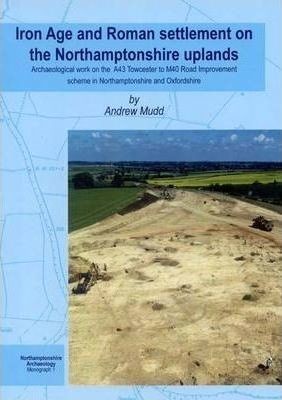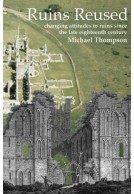Google Books previews are unavailable because you have chosen to turn off third party cookies for enhanced content. Visit our cookies page to review your cookie settings.
Iron Age and Roman Settlement on the Northamptonshire Uplands (Paperback)
Imprint: Heritage Publications
Pages: 228
ISBN: 9780955506208
Published: 6th August 2008
Script Academic & Professional
Pages: 228
ISBN: 9780955506208
Published: 6th August 2008
Script Academic & Professional
You'll be £17.95 closer to your next £10.00 credit when you purchase Iron Age and Roman Settlement on the Northamptonshire Uplands. What's this?
+£4.99 UK Delivery or free UK delivery if order is over £40
(click here for international delivery rates)
Order within the next 2 hours, 9 minutes to get your order processed the next working day!
Need a currency converter? Check XE.com for live rates
(click here for international delivery rates)
Order within the next 2 hours, 9 minutes to get your order processed the next working day!
Need a currency converter? Check XE.com for live rates
Archaeological excavations in advance of the construction of the new A43 dual carriageway between Towcester and the M40, in both Northamptonshire and Oxfordshire, were carried out by Northamptonshire Archaeology in 2000 and 2001 in accordance with Highways Agency requirements. Excavations were undertaken on five settlement sites four dating to the Iron Age/early Roman period, and one to the Roman period. Three of the Iron Age sites, each of a different form, lay within 500m of each other south of Towcester. There were also investigations on a smaller scale on sites principally of the Iron Age and Roman periods, including a pit lignment. The opportunity has also been taken to present the results of a magnetometer survey at Tusmore Deserted Medieval Village, which included part of a Roman settlement. This report also summarises the more disparate evidence for medieval land-use. The investigations are particularly significant in view of the limited previous archaeological work in this area, much of which lies on Boulder Clay geology. The finds comprise moderately large collections of pottery (c 8000 sherds) and animal bone (77 kg) and small collections of metal and other finds. Of particular importance was the discovery of Iron Age iron smelting at Biddlesden Road Bridge and early Roman iron melting at Syresham. Detailed analysis indicates that both slag tapping and non-slag tapping technologies were used in the Iron Age. Early Roman pottery kilns were found at Syresham and Whitfield, adding to the picture of a widespread but small-scale industry at this time. A report on a group of infant burials from Silverstone Fields Farm is presented in detail.The evidence is discussed and set in its regional context. A comparison of the artefactual and economic evidence from the Iron Age sites suggests that there were slight differences in the assemblages which could indicate different economic practices and perhaps social roles for these settlements.
Other titles in Heritage Publications...














